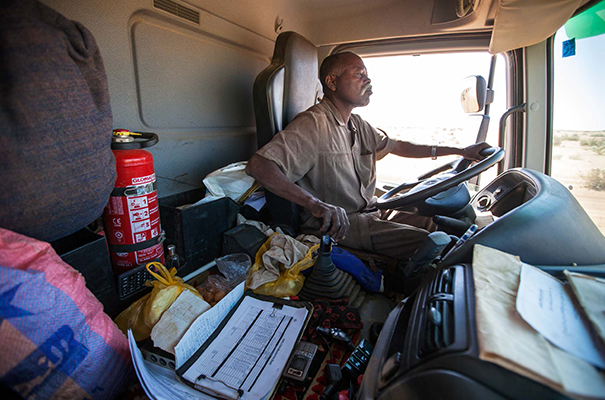Cross-Border Health Integrated Partnership Project

The Cross-Border Health Integrated Partnership Project (CB-HIPP) was designed to extend quality integrated health services in selected strategic border areas and other transport corridor sites in East, Central and Southern Africa (ECSA region). The project aim was to address the need and gap for alternative health financing so as to increase the uptake and sustainability of HIV and other health services, specifically in selected strategic border areas and other transport corridor sites in East, Central and Southern Africa (ECSA region), within an enabling policy environment in the ECSA region.
The project ran from March 2015 – October 2017, and had an important learning component to enable sharing of lessons.
The Cross-Border Health Integrated Partnership Project was designed to achieve three main results:
- Increase access to and uptake of integrated health and HIV/AIDS services at strategic cross-border sites and select regionally recognised HIV transmission hotspots along eastern, central, and southern transport corridors
- Identify, implement and test alternative health-financing models to strengthen the long-term sustainability of health and HIV/AIDS service delivery
- Strengthen the leadership and governance of intergovernmental institutions, so they can assist in improving the health of mobile and vulnerable populations
Population of target
The project’s core target population included female sex workers, men having sex with men, people who inject drugs, transport (truck drivers and their assistants) and other mobile workers (miners, border agency staff, fisher folk), people living with HIV, and vulnerable community members, including young women and girls.
The migrant and mobile populations play an important role in regional integration and development, yet they are exposed to numerous health risks and vulnerabilities due to lifestyle factors as well as poor health services. Health services in cross border areas are often weak, inaccessible or unaffordable. Services in cross-border zones are also poorly coordinated leading to duplication of effort and poor targeting of resources. The policy environment often inhibit access to affordable services for key and other vulnerable populations, including mobile populations. Finally, there are noted difficulties in sustaining service delivery. CB-HIPP was designed to responds to these challenges.
Approach
Our focus on CB-HIPP was to galvanise political commitment, general leadership, policy and resource allocation, and adoption of best practices to improve health service delivery along transport corridors in the East Central and Southern Africa (ECSA) region. To ensure the delivery of this outcome, AFIDEP’s overall approach involved:
- Mapping key stakeholders and activities in health service provision along EAC regional transport corridors focusing on key and mobile populations, including those living and working in cross-border areas
- Identifying policy and programme barriers of health and HIV/AIDS service provision
- Synthesising evidence to guide related policy actions; and
Monitoring performance to accelerate implementation of policies and strategies
CB-HIPP was implemented by a consortium of partners composed of:
- FHI360 (www.fhi360.org) which was the Prime Partner and took leadership in Result Area 1 – The increased access to and uptake of integrated health and HIV/AIDS services at strategic cross-border sites and a select few regionally recognised HIV transmission “hotspots” along Eastern, Central, and Southern transport corridors
- Abt Associates (www.abtassociates.com) leading Result Area 2 – Alternative health-financing models identified, implemented, and tested to strengthen the long-term sustainability of networked health and HIV/AIDS service delivery
- AFIDEP (www.afidep.org) leading Result Area 3 – Strengthened leadership and governance by inter-governmental institutions to improve the health of mobile and vulnerable populations.
Other consortia partners include:
- African Network for Strategic Communication in Health and Development (AfriComNet) http://www.africomnet.org/
- Development Alternatives Inc. (DAI) http://www.dai.com/
- Federation of East African Freight Forwarders Association (FEAFFA) http://www.feaffa.com/
- Howard University https://www2.howard.edu/
- International Organization for Migration (IOM) http://www.iom.int/
- Medic Mobile http://medicmobile.org/
- National Organization of Peer Educators (NOPE) http://www.nope.or.ke/
- North Star Alliance (NSA) http://www.northstar-alliance.org/ and
- Program for Appropriate Technology in Health (PATH) http://www.path.org/
Key Details
| Dates: | March 2015 to October 2017 |
| Aim: | The project aim was to address the need and gap for alternative health financing in order to increase uptake and sustainability of HIV and other health services. The project looked into fostering an enabling policy environment for this to happen in selected strategic border areas and transport corridor sites in East, Central and Southern Africa (ECSA region). |
| Where: | Burundi , Kenya , Rwanda , Tanzania , Uganda |
Related Events
Apr 2022
Apr 2021

